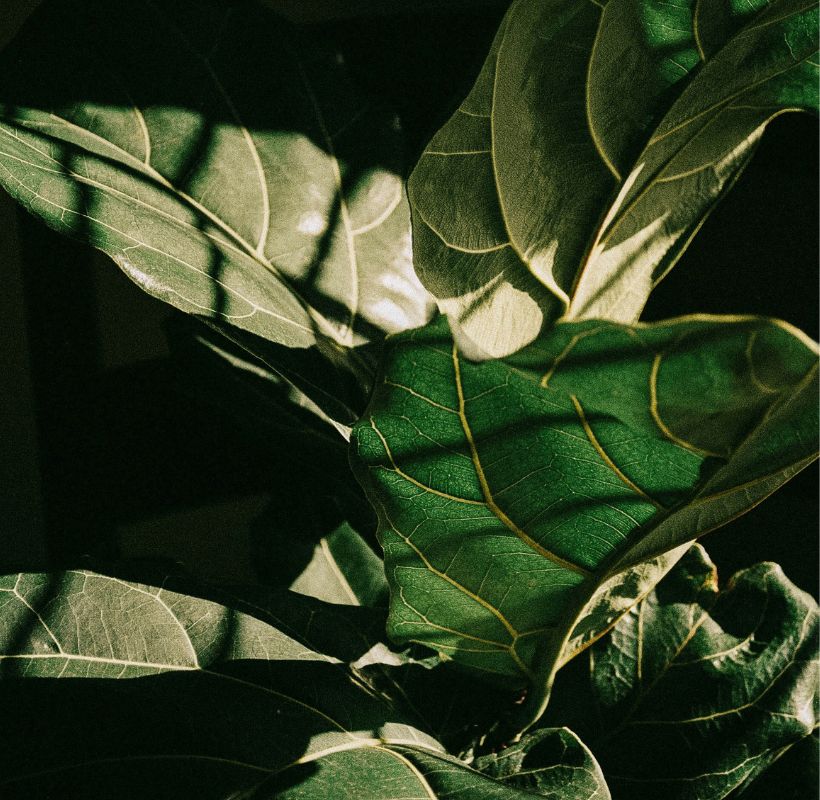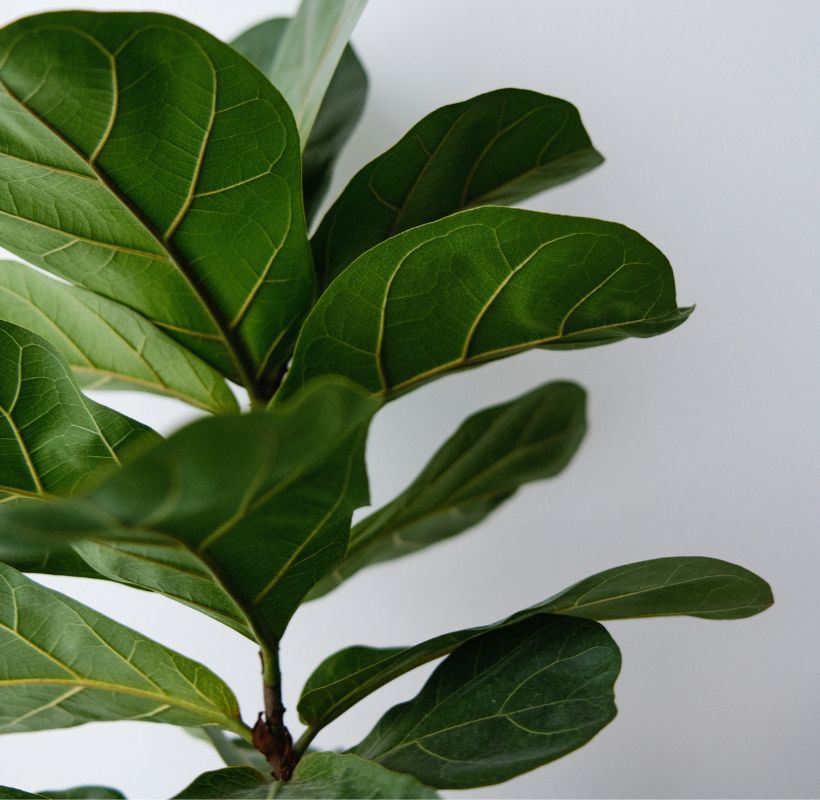Fiddle Leaf Fig Benefits and Care Guide
Fiddle Leaf Fig: Benefits and Care Guide
The Fiddle Leaf Fig (Ficus lyrata) is a trendy and visually striking houseplant known for its large, violin-shaped leaves. Native to the tropical rainforests of western Africa, this plant has become a favorite in modern interior design due to its sculptural appearance and ability to elevate any space. Beyond aesthetics, the Fiddle Leaf Fig offers several benefits that make it a valuable addition to homes and offices. This article explores the Fiddle Leaf Fig benefits and provides essential care tips to help you keep your plant thriving.

Benefits of the Fiddle Leaf Fig
1. Air Purification
Like many other indoor plants, the Fiddle Leaf Fig contributes to improving indoor air quality. It absorbs carbon dioxide and releases oxygen during photosynthesis, making the air fresher and healthier to breathe. Additionally, it helps filter toxins such as formaldehyde and benzene from the air, promoting a cleaner indoor environment.
How It Works:
Large leaves provide a substantial surface area for photosynthesis.
The plant’s natural air-filtering properties reduce indoor pollutants.
Tip: Place the plant in rooms where you spend the most time, such as the living room or bedroom, to maximize its air-purifying benefits.
2. Aesthetic Appeal
The Fiddle Leaf Fig is celebrated for its bold and dramatic appearance. Its tall, upright growth habit and broad, glossy leaves make it a statement piece in any room. Whether placed in a corner, near a window, or as part of a plant grouping, the Fiddle Leaf Fig adds sophistication and vibrancy to interior spaces.
Design Tips:
Combine the plant with minimalist or modern decor for a stylish appearance.
Choose a decorative pot to boost its aesthetic appeal.
3. Boosts Mood and Reduces Stress
Studies show that having plants indoors can reduce stress levels and improve mental well-being. The Fiddle Leaf Fig, with its lush foliage and vibrant presence, creates a calming and inviting atmosphere. Caring for plants also provides therapeutic benefits, helping to alleviate anxiety and improve focus.
Why It Helps:
The act of nurturing a plant promotes mindfulness and relaxation.
Its greenery brings a touch of nature indoors, fostering a connection to the natural world.
4. Humidity Regulation
The Fiddle Leaf Fig helps maintain indoor humidity by releasing moisture through a process called transpiration. This can be particularly beneficial in dry environments or during colder months when indoor heating systems lower humidity levels.
Benefits of Improved Humidity:
Reduces respiratory discomfort caused by dry air.
Prevents dry skin and irritation.
Supports the health of other indoor plants.
Tip: Group your Fiddle Leaf Fig with other plants to create a microclimate that further enhances humidity.
5. Noise Reduction
Although not commonly discussed, plants like the Fiddle Leaf Fig can help reduce noise levels in indoor spaces. Its large leaves absorb and diffuse sound, making it a natural noise dampener in busy households or office environments.
Where to Place It:
Near windows to reduce outdoor noise.
In open-plan spaces to minimize echoes and enhance acoustics.
6. Improves Indoor Environment
By adding a Fiddle Leaf Fig to your space, you’re not only improving air quality and aesthetics but also creating a more inviting and comfortable environment. Its lush greenery has a positive psychological impact, encouraging creativity and productivity, especially in work-from-home setups or offices.
Benefits in Workspaces:
Helps improve focus and productivity.
Creates a more dynamic and inspiring environment.

How to Care for Your Fiddle Leaf Fig
While the Fiddle Leaf Fig is fairly easy to maintain, it requires specific conditions to grow well.
1. Light Requirements
The Fiddle Leaf Fig flourishes in bright, indirect sunlight. Direct sunlight can scorch its leaves, while low light conditions may stunt its growth.
Tips:
Place the plant near a south- or east-facing window for optimal light.
Turn the plant every few weeks to promote balanced growth.
2. Watering
The plant prefers a consistent watering schedule but is sensitive to overwatering, which can cause root rot.
Tips:
water the plant when the top 1-2 inches of soil are dry.
Make sure the pot has drainage holes to avoid waterlogging.
3. Soil
Fiddle Leaf Figs prefer well-draining soil that retains some moisture but doesn’t stay soggy.
Recommendation:
Use a mix designed for indoor plants or create your own by combining potting soil with perlite or sand.
4. Temperature and Humidity
The plant thrives in temperatures between 65-75°F (18-24°C) and prefers moderate to high humidity levels.
Tips:
Keep the plant away from drafts, air conditioners, or heaters.
Boost humidity by misting the leaves or using a humidifier.
5. Pruning and Cleaning
Pruning regularly helps maintain the plant's shape and removes any dead or damaged leaves. Cleaning the leaves keeps them dust-free, ensuring efficient photosynthesis.
Tips:
Use a soft, damp cloth to gently clean the leaves.
Prune in spring or early summer to encourage new growth.
6. Repotting
Repot your Fiddle Leaf Fig every 1-2 years or when it outgrows its current pot. Select a pot that is 1-2 inches wider in diameter than the previous one.
Steps:
Gently take the plant out of its pot, ensuring the root ball remains intact.
Place it in the new pot with fresh soil and water thoroughly.
Conclusion
The Fiddle Leaf Fig is not only a decorative plant. With its air-purifying abilities, mood-enhancing qualities, and humidity-regulating properties, it contributes significantly to creating a healthier and more pleasant indoor environment. By understanding its care requirements and benefits, you can enjoy the beauty and functionality of this iconic houseplant for years to come. Whether you’re a seasoned gardener or a beginner, the Fiddle Leaf Fig is an excellent choice to enrich your home or workspace.

